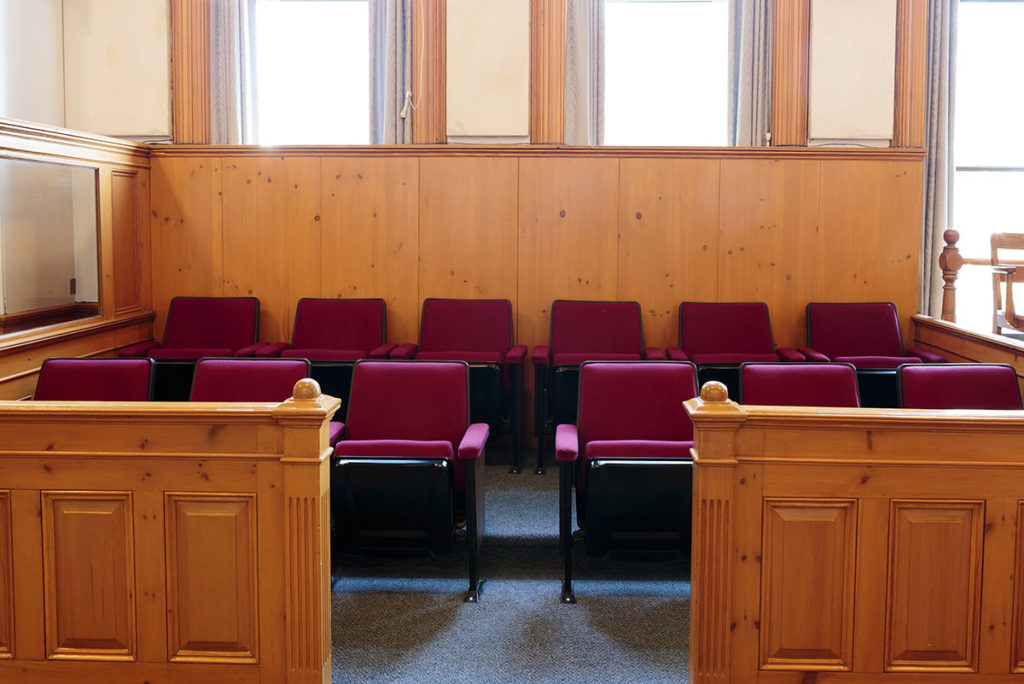Some officials still haven’t learned their lesson from COVID-19
Despite some progress, the United States finds itself in a familiar place: in the throes of yet another COVID-19 wave, which is ravaging many of the usual communities, including those in correctional facilities. Indeed, in a bittersweet news cycle, officials announced that more than 70 percent of Americans had received at least one COVID-19 vaccination dose. This is an impressive feat, but on the very same day, the media reported a significant COVID-19 outbreak in the Cobb County jail.
“The Cobb County jail is now under strict COVID-19 protocols after 51 inmates and staff tested positive for the virus last week,” according to a WSB-TV report. This is in addition to metro Atlanta judges, at least one of whom was from Cobb, who tested positive after attending a conference on Jekyll Island—though where they originally contracted it is anyone’s guess.
Cobb isn’t an outlier, though. Virtually all correctional facilities have been impacted by the pandemic. However, the recent wave of infections demonstrates that policymakers haven’t learned their lessons from COVID-19, nor have they adopted approaches that adequately slow the spread in correctional facilities.
In fairness, officials have instituted some protocols to try and stem the spread of COVID-19 in jails and prisons. The Cobb County jail, for instance, isolates infected individuals, mandates mask usage and has vaccinated nearly 500 detainees. While these steps are laudable, further outbreaks were likely always inevitable under the current conditions and in the face of the highly contagious Delta variant. In fact, the pandemic has ravaged the justice system for well over a year. It could get worse, and it is obvious why.
Jails and prisons crowd large numbers of individuals together in places where social distancing is difficult, and residents do not receive the best health care. That’s just a matter of fact. Thus, those who are housed in correctional facilities often suffer. It seems obvious, then, that one of the best answers to COVID-19 surges in detention facilities is to incarcerate fewer people.
To do this, policymakers need to limit admissions, while also releasing many of those who are currently incarcerated, and there’s a precedent for this. Last year, the Trump administration temporarily released thousands of nonviolent federal inmates to limit COVID-19’s spread in federal penitentiaries. Unfortunately, despite continuing to be breeding grounds for COVID-19, the Biden administration recently announced that it intends on recalling the nonviolent offenders Trump released.
Even with Biden’s misguided reversal, Georgia officials ought to explore Trump’s model. Inmates who committed nonviolent crimes and pose no risk to society probably shouldn’t continue to be crowded into jails and prisons—especially if they can serve the remainder of their sentence either on house arrest or some form of community supervision. Securing their early release will help limit the spread of COVID-19 in jails and prisons, but this only solves part of the problem.
Every single day there are a host of new arrests and admissions into local jails. Some of these are crimes that require police intervention, but the majority of the arrests stem from nonviolent offenses. That doesn’t mean that a number of them aren’t serious, but many are admittedly petty. Rather than arresting those accused of nonviolent, victimless, minor misdemeanors and placing them in county jails, police should be encouraged—and in some cases required—to issue more citations in lieu of arrests, reserving jail space only for those who must be incarcerated.
Further, policymakers should revisit bail reform. Under the Nathan Deal administration, the legislature took small steps toward fixing the broken bail system, but the measure was limited. It “requires judges to consider the financial circumstances of an accused individual when determining bail,” but that doesn’t stop judges from setting bail amounts that might be beyond individuals’ means. If so, then guilty or not, high bail could prevent the underprivileged from securing their release before their trial. This could force them to languish in jail for months during a smoldering pandemic—thereby punishing them, in large part, for their poverty.
It’s clear that the virus is mutating, continues to be a danger to the public, and correctional facilities are often epicenters of outbreaks. Instead of maintaining the status quo and wrestling with surges on a regular basis, officials should more seriously explore ways to reduce jail and prison populations. Expanding the use of citations instead of arrests, reforming the bail system and relying more on community supervision would be smart initial steps.








